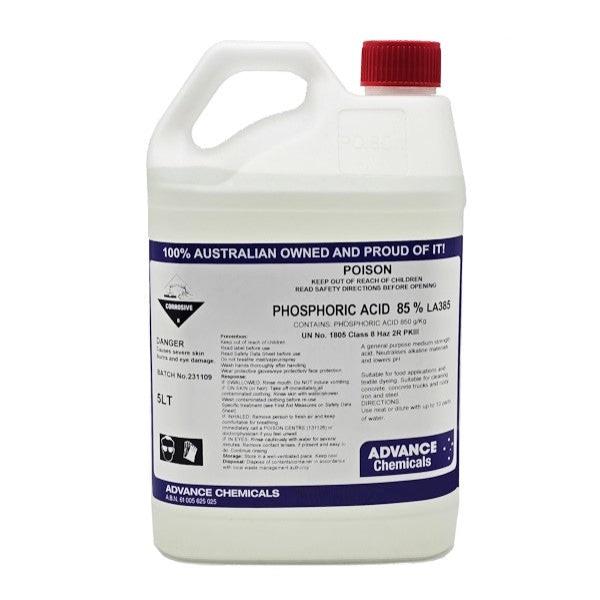

Phosphoric acid is commonly used for various cleaning purposes, particularly in industries and households. Here's how phosphoric acid (concentration of 85%) can be used for cleaning:
Removing Rust: Phosphoric acid is effective at removing rust from metal surfaces. It can be applied directly to the rusted area or used as part of a rust removal solution. The acid reacts with the iron oxide (rust), converting it into a water-soluble compound that can be easily rinsed away.
Metal Cleaning and Brightening: Phosphoric acid is used in metal cleaning applications to remove oxides and scale from metal surfaces. It can also brighten metals, restoring their shine by removing tarnish and oxidation.
Concrete Cleaning and Etching: Phosphoric acid is commonly used to clean and etch concrete surfaces. It can remove mineral deposits, efflorescence, and other stains from concrete floors, walls, and driveways. Additionally, phosphoric acid etching is used to prepare concrete surfaces for painting or sealing by creating a roughened texture that improves adhesion.
Household Cleaning: In diluted form, phosphoric acid can be used for household cleaning tasks such as removing mineral deposits from sinks, toilets, and tubs. It's also effective for cleaning tile grout and removing soap scum.
Rust Converter: Phosphoric acid is often used as a rust converter, where it chemically converts iron oxide (rust) into a more stable compound that prevents further corrosion. This is commonly used in automotive applications for treating rusted metal surfaces before painting.
When using phosphoric acid for cleaning purposes, it's essential to follow these safety precautions:
As with any cleaning chemical, it's essential to read and follow the manufacturer's instructions and safety guidelines carefully. If you're unsure about how to use phosphoric acid safely and effectively for your specific cleaning task, consider consulting with a professional cleaner or chemical supplier for guidance.